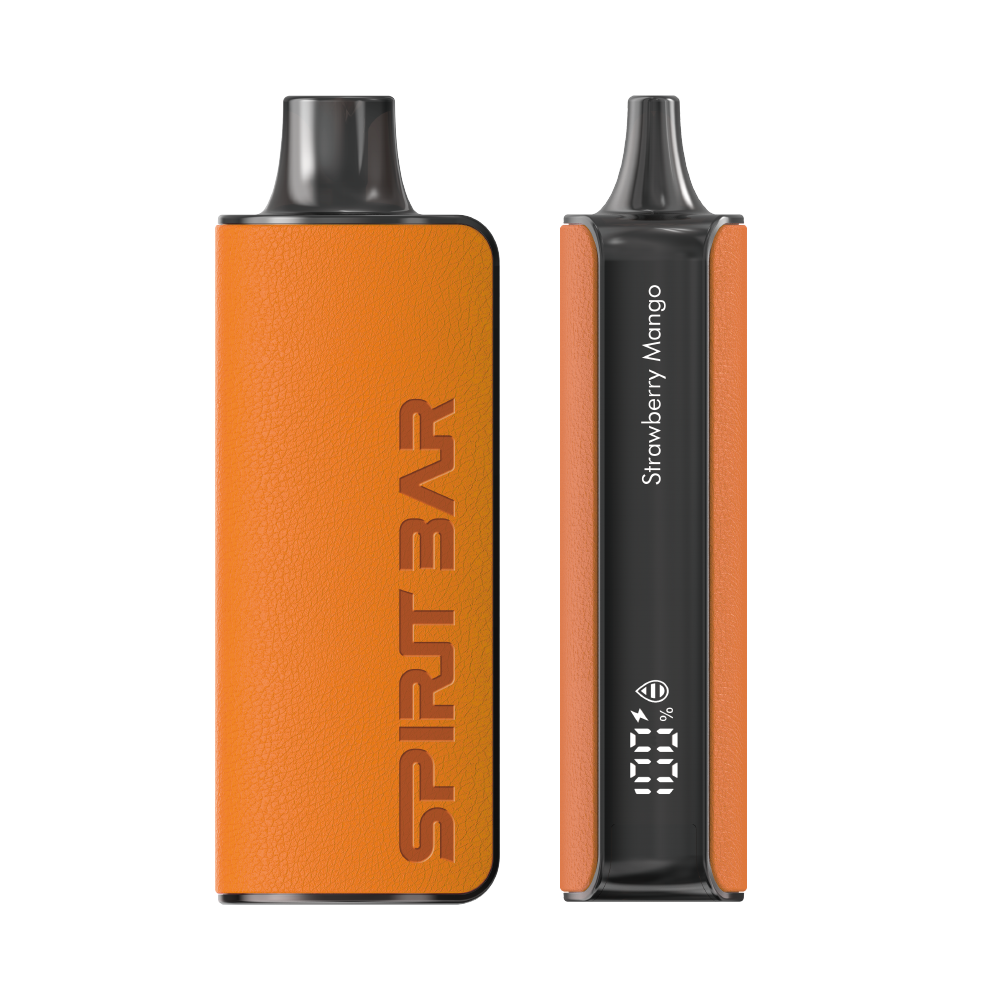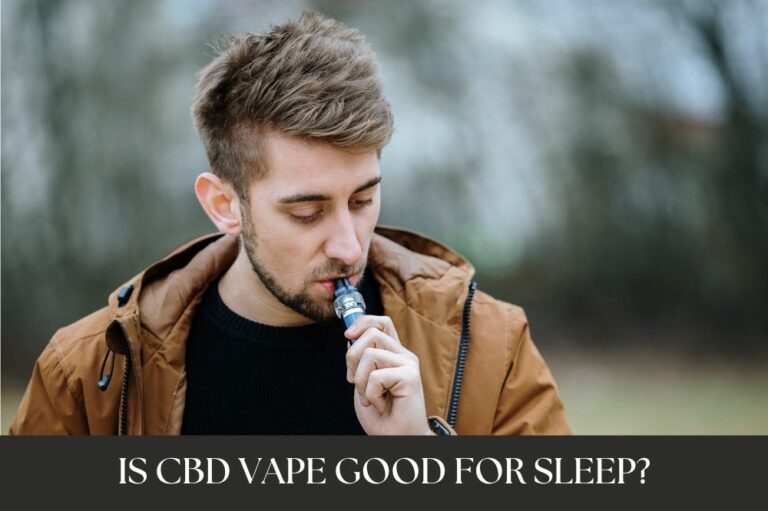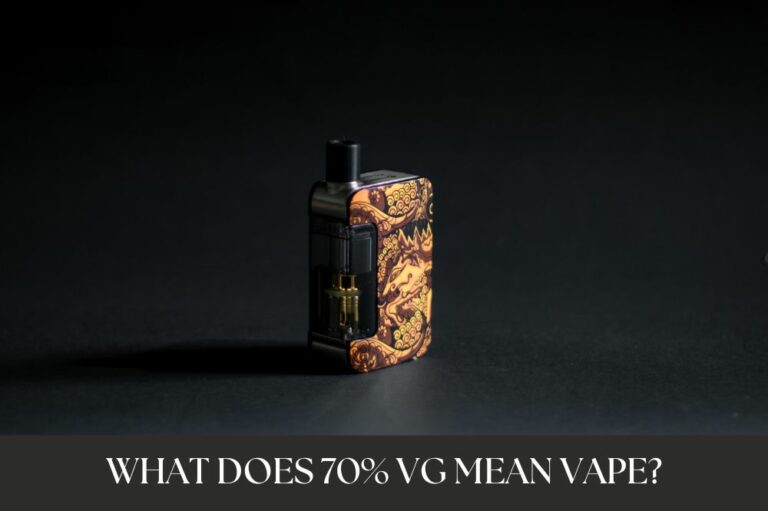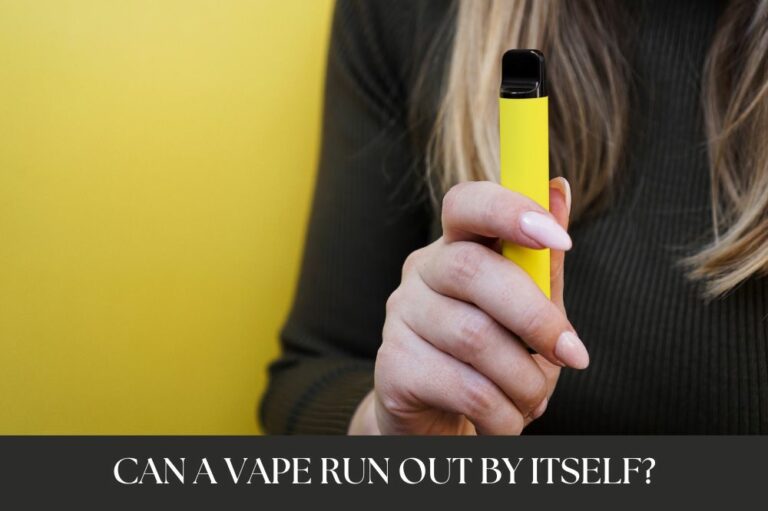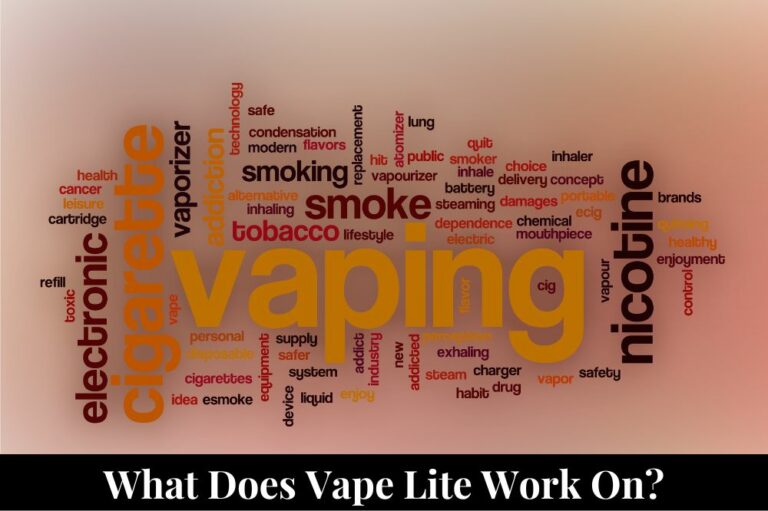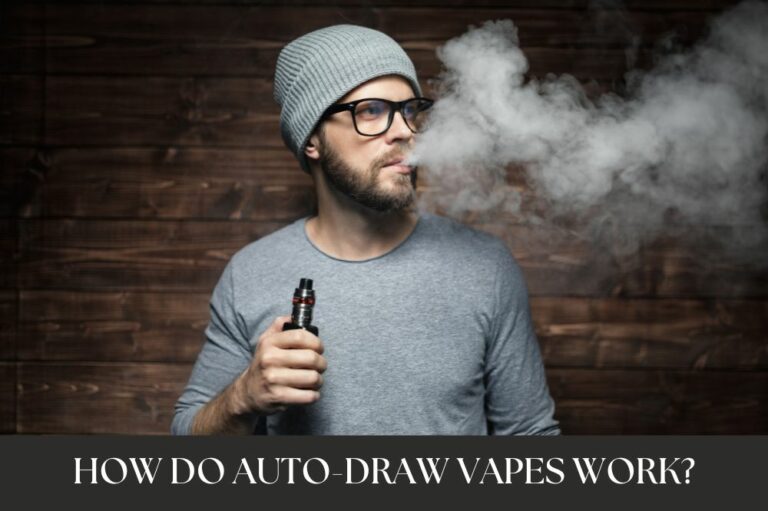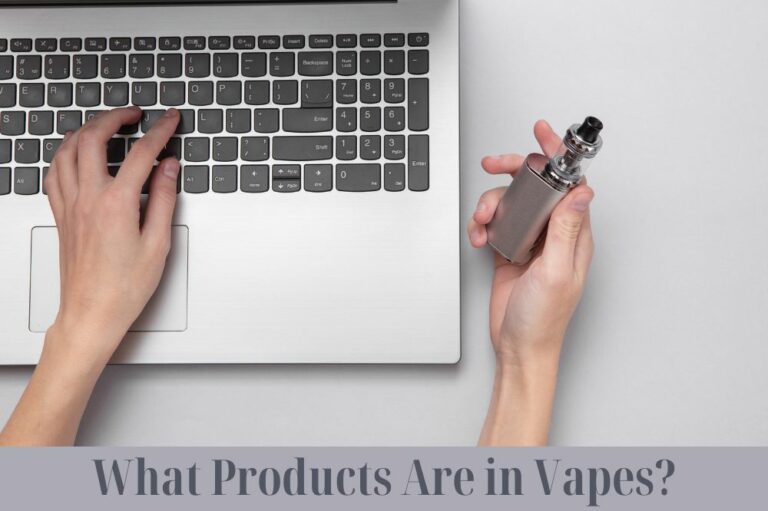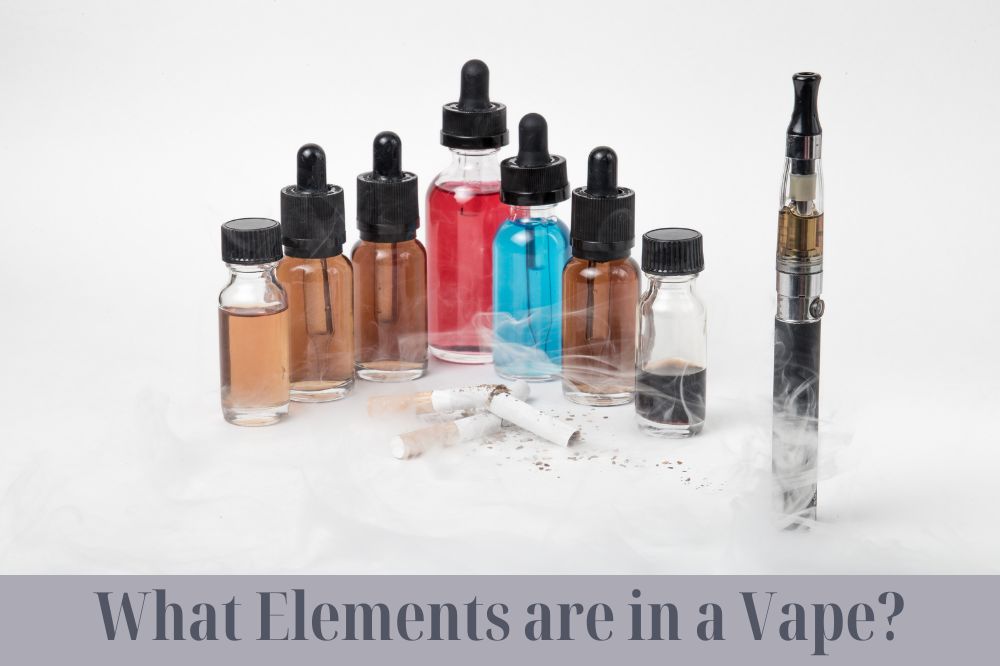
If you’re curious about vaping, you might be wondering what exactly is in a vape. E-cigarettes, or vapes, have become increasingly popular in recent years as an alternative to traditional tobacco products. However, the ingredients in vapes can be a bit of a mystery to those who are unfamiliar with them.
At the bare minimum, e-cigarette liquids have three main components: flavors, sweeteners, and solvents. Solvents are substances used to dissolve either nicotine or marijuana-derived compounds, depending on the type of vape being used. E-juice that fills the cartridges usually contains nicotine (which is extracted from tobacco), propylene glycol, flavorings, and other chemicals. Some studies have found that even e-cigarettes claiming to be nicotine-free contain trace amounts of nicotine. Additionally, when the e-liquid heats up, more toxic chemicals are formed.
It’s important to note that not all vapes are created equal, and the ingredients can vary depending on the brand and type of device being used. However, understanding the basic components of a vape can help you make informed decisions about whether or not vaping is right for you. In the following sections, we’ll take a closer look at each of the main components of a vape and what you need to know about them.
What is a Vape?
If you’re wondering what a vape is, it’s a device that heats up a liquid to create an aerosol that you inhale. The liquid is usually called e-juice, and it contains a mixture of chemicals that can vary depending on the type and brand of vape.
Vapes are often used as an alternative to smoking cigarettes, as they don’t produce the same harmful smoke and tar. However, it’s important to note that vapes are not completely harmless and can still have negative health effects.
SPIRITBAR Katana BP10000
- Slender, leather-textured body reminiscent of a katana handle for an authentic samurai feel
- Unique samurai-inspired e-liquid flavor - fruity yet not too sweet, with a luxurious, elegant aroma
- Powerful 650mAh rechargeable battery for extended vaping time
- Large 18ml e-liquid capacity and 10,000 puff capacity
- Advanced mesh coil and e-liquid & power display screens for optimal vaping experience
The special juice captures the essence of the samurai spirit with its rich, smoothly pulsating flavor that brings new satisfaction with every puff. The device's slender, leather-textured design evokes the grip of a samurai's katana, making this product a perfect choice for beginner vapors.
The main components of a vape include a battery, a heating element, and a tank or cartridge to hold the e-juice. When you inhale, the battery powers the heating element, which vaporizes the e-juice and creates the aerosol that you inhale.
E-juice can contain a variety of chemicals, including nicotine, flavorings, and solvents. Some vapes may also be used to consume marijuana or other drugs, which can add additional chemicals to the mix.
SPIRITBAR Jack’s Flask 9000 Puffs
- Stylish pirate flask-shaped body providing an exciting vaping experience
- Delivering up to 9000 puffs per device
- 20ml e-liquid capacity with 50mg nicotine strength for satisfying throat hit
- Specialized pirate-themed e-juice flavors for rich, swirling taste
- Premium mesh coil optimizes flavor profile for maximum vaping enjoyment
This disposable vape captures the daring spirit of the high seas with its flask styling and signature pirate e-juice flavors. The extraordinary battery life provides 9000 indulgent puffs for extended vaping pleasure. Live boldly and freely with the Jack's Flask - a legendary vaping experience fit for a pirate's adventures.
Overall, while vapes may be a less harmful alternative to smoking cigarettes, they still have potential health risks and should be used with caution. It’s important to understand what chemicals are in the e-juice you’re using and to use vapes responsibly.
Components of a Vape
When it comes to understanding what elements are in a vape, it’s important to know the components that make up the device. Here are the four main components of a vape:
Battery
The battery is the power source for your vape device. It provides the energy needed to heat the coil and turn the e-liquid into vapor. Vape batteries come in different shapes, sizes, and capacities. Some vapes have built-in batteries that can be charged via USB, while others use replaceable batteries that can be swapped out when they run out of charge.
Tank
The tank is the part of the vape that holds the e-liquid. It’s usually made of glass or plastic and has a capacity of 1-5ml. The tank connects to the battery and the coil, and it’s responsible for delivering the e-liquid to the coil. Some tanks are refillable, while others are disposable and need to be replaced when they run out of e-liquid.
Coil
The coil is the heating element in your vape device. It’s made of a resistive wire that heats up when electricity flows through it. The coil is responsible for turning the e-liquid into vapor. There are different types of coils available, such as single coil, dual coil, and mesh coil. Each type of coil has a different resistance and heating rate, which affects the flavor and vapor production of your vape.
E-Liquid
E-liquid, also known as vape juice, is the liquid that is vaporized in your vape device. It’s usually made of a combination of propylene glycol (PG), vegetable glycerin (VG), flavorings, and nicotine (optional). E-liquids come in different flavors and nicotine strengths, and they can be customized to suit your personal preferences.
Understanding the components of a vape is essential for maintaining and troubleshooting your device. By knowing how each part works, you can identify and fix any issues that may arise.
SPIRITBAR Katana BP10000
- Slender, leather-textured body reminiscent of a katana handle for an authentic samurai feel
- Unique samurai-inspired e-liquid flavor - fruity yet not too sweet, with a luxurious, elegant aroma
- Powerful 650mAh rechargeable battery for extended vaping time
- Large 18ml e-liquid capacity and 10,000 puff capacity
- Advanced mesh coil and e-liquid & power display screens for optimal vaping experience
The special juice captures the essence of the samurai spirit with its rich, smoothly pulsating flavor that brings new satisfaction with every puff. The device's slender, leather-textured design evokes the grip of a samurai's katana, making this product a perfect choice for beginner vapors.
Elements in E-Liquid
When it comes to vaping, one of the most important components of the experience is the e-liquid. This is the liquid that is vaporized by the heating element in your vape device, and it can contain a variety of different elements. Here are the main components of e-liquid that you should be aware of:
Propylene Glycol
Propylene glycol, or PG, is a common ingredient in e-liquid. It is a clear, odorless liquid that is used as a carrier for other ingredients. PG is known for its ability to produce a strong throat hit, which many vapers find satisfying. It is also a good flavor carrier, which means that it can help to enhance the taste of your e-liquid.
Vegetable Glycerin
Vegetable glycerin, or VG, is another common ingredient in e-liquid. It is a thick, sweet liquid that is derived from vegetable oil. VG is known for its ability to produce large clouds of vapor, which many vapers find appealing. It is also a good flavor carrier, although it can sometimes mute the taste of your e-liquid.
Nicotine
Nicotine is an optional ingredient in e-liquid, and it is what gives many vapers the sensation of smoking. Nicotine is a stimulant that can be addictive, so it is important to be aware of how much nicotine you are consuming. E-liquids can contain varying levels of nicotine, from 0mg to 50mg or more.
Flavorings
Flavorings are what give e-liquid its unique taste. There are many different flavorings available, ranging from fruity to dessert flavors. Some e-liquids use natural flavorings, while others use artificial flavorings. It is important to choose a flavor that you enjoy, as this will make your vaping experience more enjoyable.
In conclusion, e-liquid is a complex mixture of different elements that work together to create a satisfying vaping experience. By understanding the different components of e-liquid, you can make informed choices about what you are vaping and how much nicotine you are consuming.
Health Implications of Vape Elements
When you vape, you are inhaling an aerosol that consists of several elements. While some of these elements are harmless, others can have negative health implications. Here are some of the most common elements found in vape aerosols and their potential health effects:
- Nicotine: Nicotine is a highly addictive substance that can harm your brain development, increase your heart rate, and constrict your blood vessels. It can also increase your risk of developing heart disease and lung cancer.
- Propylene glycol: Propylene glycol is a common ingredient in vape liquids that can cause irritation to your eyes, nose, and throat. It can also cause allergic reactions in some people.
- Vegetable glycerin: Vegetable glycerin is another common ingredient in vape liquids that can cause irritation to your eyes, nose, and throat. It can also cause dry mouth and skin irritation.
- Flavorings: Many vape liquids contain flavorings that can cause lung inflammation and damage. Some flavorings, such as diacetyl, can cause a serious lung condition called popcorn lung.
- Heavy metals: Some vape devices contain heavy metals, such as lead, nickel, and chromium, that can be harmful to your health. Exposure to these metals can cause lung damage, kidney damage, and other health problems.
- Formaldehyde: When you heat vape liquids, they can produce formaldehyde, a carcinogenic substance that can cause cancer and other health problems.
In conclusion, the elements found in vape aerosols can have negative health implications. It’s important to be aware of the potential risks associated with vaping and to make informed decisions about your health. If you are concerned about the health effects of vaping, talk to your doctor or a healthcare professional.
Regulations on Vape Elements
When it comes to vaping, there are regulations in place to ensure the safety of users. The regulations cover the elements that are used in vape products, including e-liquids and hardware.
E-Liquid Regulations
E-liquids, also known as vape juice, are the liquids that are used in vape devices to create vapor. The ingredients in e-liquids are regulated to ensure that they are safe for consumption. The following are some of the regulations that apply to e-liquids:
- FDA Approval: The Food and Drug Administration (FDA) requires that e-liquids be approved before they can be sold to consumers.
- Ingredients: E-liquids must contain only ingredients that are safe for consumption. This includes propylene glycol, vegetable glycerin, flavorings, and nicotine (if applicable).
- Nicotine Content: The nicotine content in e-liquids is regulated. The maximum nicotine concentration allowed in e-liquids is 20mg/mL.
Hardware Regulations
Vape hardware includes the devices that are used to heat the e-liquid and create vapor. The following are some of the regulations that apply to vape hardware:
- FDA Approval: Vape hardware must be approved by the FDA before it can be sold to consumers.
- Materials: The materials used in vape hardware must be safe for consumption. This includes the heating element, battery, and any other components.
- Child-Resistant Packaging: Vape hardware must be sold in child-resistant packaging to prevent accidental ingestion.
- Warning Labels: Vape hardware must include warning labels that inform users of the potential risks associated with vaping.
It’s important to note that regulations on vape elements can vary by state. It’s important to check your local regulations to ensure that you are in compliance. By following these regulations, you can ensure that you are using safe and legal vape products.
Alternatives to Vaping
If you’re looking for alternatives to vaping, there are many options available to you. Here are some of the most popular ones:
- Nicotine replacement therapy (NRT): NRT includes products like nicotine gum, patches, lozenges, and inhalers. These products can help you quit smoking or vaping by delivering nicotine to your body in a less harmful way.
- Heated tobacco products: These products heat tobacco instead of burning it, which reduces the amount of harmful chemicals produced. However, they still contain nicotine and other harmful substances.
- Herbal vaporizers: Herbal vaporizers are devices that heat up herbs instead of e-juice. They can be used for aromatherapy or for smoking herbs like cannabis.
- Essential oil diffusers: Essential oil diffusers are devices that release essential oils into the air. They can be used for relaxation, stress relief, and to improve your mood.
- Chewing gum: Chewing gum can help reduce cravings for nicotine or other substances.
- Cold turkey: Quitting smoking or vaping cold turkey is difficult, but it can be done. It’s important to have a support system in place and to be prepared for withdrawal symptoms.
It’s important to note that some of these alternatives may still contain nicotine or other harmful substances. It’s always best to consult with a healthcare professional before trying any new product or quitting smoking or vaping.

